

It’s a science-fiction meets ready-to-own fitness wearable. Recon Instrument’s $499 Recon Jet enters markets as the only consumer-ready, mass-produced heads-up display for bicyclists and joggers. Think of it as a sports-oriented Google Glass, except at a third of the price. So after its recent price cut to $499 should you buy or wait until the next model comes out?
Read on to find out out, and at the end of this review you can win our review model for yourself! Be sure to watch the video review for some bonus entries.
Headquartered in Vancouver, British Columbia, Recon Instruments first slid into public consciousness after releasing its Recon Transcend snow-boarding heads-up-display (HUD). The Transcend introduced a number of novel features, which included navigation information, temperature, speed, and altitude. As with the Recon Jet, the Transcend projected data onto a miniature LCD screen. The arrival of the Recon Snow heralded a new age of fitness wearables which could project data directly into the viewing area of a user.

Recon Instruments would later successfully crowd fund a cycling and jogging variation on its snowboarding and skiing wearable: The Recon Jet. The technology’s success led to Recon’s acquisition by Intel. With a cash influx, and potential tie into Intel’s other intellectual properties, including Basis (our Basis Peak review) and the Curie platform, the Recon Jet’s future looks bright.
It’s also worth noting that Recon Instruments now offers a rebate to early adopters – which means if you bought a Recon Jet – at any time – you now qualify for around $200 in rebates. It’s a sign of an ethical company and a welcome trend in the often anti-consumer world of technology. It’s also worth noting that Recon Instruments host a free-to-download Software Development Kit: The Recon SDK.

Out of the box, the Recon Jet appears deceptively militarized. Its design dispenses with aesthetic flourishes, focusing on ruggedization. Owing to its lightweight, plastic and silicone rubber frame, there’s a fair amount of drop and water resistance. While Recon Instruments only loosely classifies the Jet as IP65, it could easily absorb the rigors of long-distance cycling, while giving the look of a soldier from a battle ravaged future.
The futuristic look of the Jet extends from its highly modular design. The glasses are polarized and as replaceable as any other component within the device, lending to a long service life. Both the battery and computing module can swap out — opening the door to future hardware upgrades.

Recon Jet Specifications
The Recon Jet’s modular design allows users to swap its components out as they become damaged or obsolete. I don’t know whether or not the individual devices contained within the Recon Jet will ever receive an upgrade – most manufacturers would never entertain the idea of modular components in anything outside of a desktop computer. Still, its efficient design permits the possibility that one day, in the future, upgrade modules could become available.
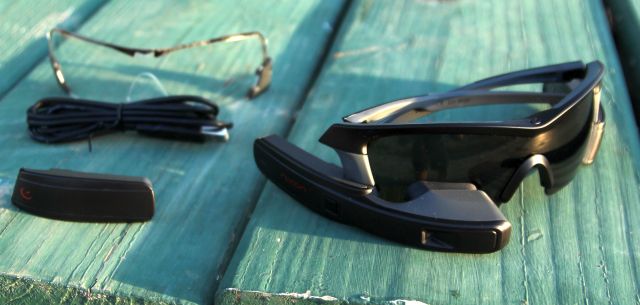
On the other hand, the hardware in the Recon Jet won’t impress anyone. It relies on an older, low power ARM Cortex A9. While power efficient, the A9 isn’t designed for use as a wearable. The A9’s design better fits it into smartphones. If I had to guess, the reason Recon Instruments opted to use the A9 is because of ReconOS’s (what’s a wearable operating system?) ability to run third party applications. The operating system is, after all, built atop Android, which might allow developers to port Java apps over, with minor modifications.
An interesting design choice is the incorporation of an infrared touchpad. The advantages of infrared technology allow for the device to operate in wet, or extremely cold, conditions. In a cold environment, a cyclist or jogger would likely wear gloves. Capacitive touchscreens notoriously go haywire when exposed to direct moisture. An infrared touchpad prevents misfires and malfunctions in inclement rain. It’s the perfect choice for an all-weather device. However, there appear to be some bugs in the system, as it doesn’t always register swipes.
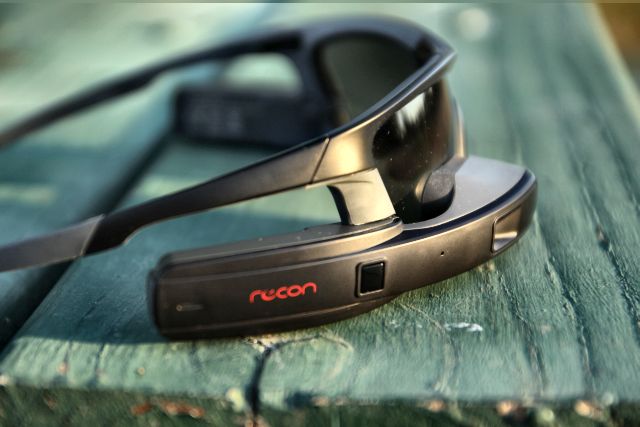
Getting started with the Jet doesn’t take much effort. First, navigate on your browser to the Recon Instruments Engage website. Users then connect their Recon Jet to a PC via microUSB cable and the desktop client will initiate the pairing process. I experienced no issues and found it incredibly easy to use.

Optionally, users can also install Recon Instrument’s mobile app, called Recon Engage (available on both Android and iOS). The Engage app lets users track and sync their individual data. Data can include heart rate monitor readings (if an ANT+ device is paired), geolocation, and more. One of the most useful features, however, isn’t just data-tracking. It’s also the ability to receive phone calls, using the speakers and noise canceling microphone.
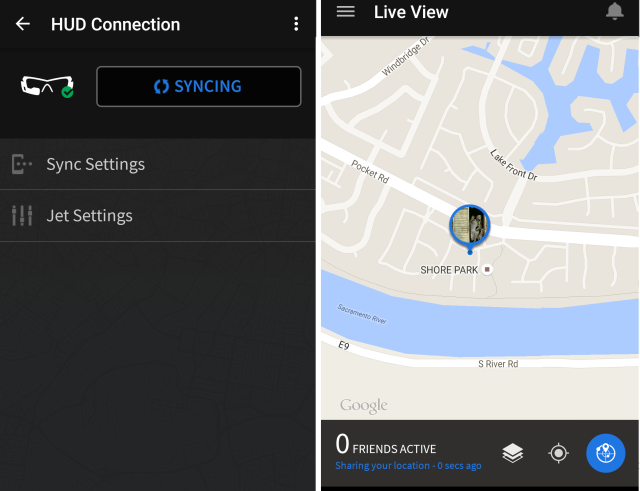
After you’ve set your device up, there’s a final step: updating the firmware. I’ve had problematic upgrade experiences in the past, particularly with Intel’s Basis Peak. That wasn’t the case with the Recon Jet. Although Recon Instruments requires that users create an account in order get firmware updates, this practice seems native to the wearables market.
Updating the firmware offers users the ability to improve the software and add additional features that weren’t available at the product’s launch. For example, both ANT+ compatibility and improved camera controls were added well after the product’s launch. With a proven track record of product support and regular firmware updates, the Jet offers one of the best software experiences on today’s fitness wearables market. I should also note that Recon Instrument’s frequent update policy and closed software ecosystem reduces the chance of the wearable becoming a security threat.
Using the infrared touchpad, users can scroll between the features of the Jet, which include user installed applications, navigation information, exercise information, notifications, and a settings menu.
The real meat-and-potatos of the Jet is its heads-up-display.
Like Google Glass, the Recon Jet displays information within view of the user. Unlike Google Glass, the Recon Jet takes a more direct route: A miniature LCD screen, with light isolation. Recon Instruments positions the miniature LCD screen in the lower-right hand side of the glasses.Users only need to glance at the screen, in order to read their information. The Recon Jet display information in several categories, the most important of which are: distance and altitude traveled, navigational data, and speed.

The Recon Jet’s display won’t turn heads. It offers a simplistic, text-based interface, controlled through the embedded infrared touchpad. There’s several menus available. Users can interact with each menu by swiping in one of four directions. Swiping left or right changes menus. Swiping up or down scrolls through submenus.

Most users won’t need to constantly interact with the IR touchpad, while in motion. I wouldn’t recommend it either, as to activate any menu requires pressing buttons located underneath the right-side of the smartglasses, on the module containing the Jet’s electronic guts. For the most part, users will only set their exercise routine (jogging or cycling) and then hit the road. I found myself actually pedaling consistently harder, knowing what my precise top speed was — this led to improved exercises and better awareness of my physical limitations.
While the Jet’s biometric data compares thinly to other dedicated fitness wearables, it does provide basic information on distance traveled, altitude changes, and speed. For the most part, however, the Recon Jet limits itself to information gathered by the gyroscope, accelerometer, magnetometer, and GPS. That means you can only receive information on speed, distance, location, and direction.
Despite its seamless ease of operation, I found myself wishing that the Jet offered voice control. The infrared touchpad does its job adequately but voice control would offer a level of simplicity that’s unrivaled in the wearable world. However, it’s worth noting that Intel stands a chance of merging its Curie technology, which could further enhance the Jet’s voice recognition capabilities and battery life performance. I’m fairly confident that the Recon Jet’s modular design will allow for a simple module drop-in to add Curie’s voice control capabilities. In short, the next generation of Recon Jet stands a great chance of revolutionizing the fitness wearables scene.
The Jet also offers ANT+ compatibility, which means it can pair with ANT+ Bluetooth peripherals, like heart rate sensors.
Although I wasn’t able to test ANT+ compatibility, this tie-in is one of the biggest advantages of the Jet over its competitors in the packed fitness wearables market. Combined with an ANT+ heart rate tracker, a HUD display offers tangible advantages: First, it provides workout and navigational information within the user’s field of vision. That translates into more efficient workouts, as users don’t need to slow their exercise down to check their biometric data – all the critical information is immediately viewable from the HUD. Second, a bicyclist should never take their eyes off the road. A HUD display improves user safety.
Another major advantage of the Recon Jet is its ability to take video and audio. While the camera (which is listed as high definition) doesn’t take particularly high quality video, it does give users the added ability to record whatever the user sees. There’s also a dedicated button for recording events: A short tap takes a picture. A double-tap and hold switches the camera into video mode, allowing users to capture almost any event. Unfortunately, using the video recording capabilities causes a significant amount of power drain. If you switch the video camera on and then forget it, then say goodbye to your battery life.
Fortunately, Recon Instruments recently updated the firmware on the Jet. The update included mostly camera fixes, which automatically shut the camera off, if it senses the user forgot to turn it off.

While I consider the Jet to be among the most innovative of wearables around, not everything is perfect.
Moisture magnet: The Jet’s glasses can sometimes fog up, due to the tight fit inside of a helmet. I found myself sometimes losing a great deal of visibility while cycling. It did not happen frequently, but this is something that never happened when wearing standard cycling sunglasses.
Slight bounce while jogging: I didn’t enjoy the Recon Jet while jogging. While I only used it for a short period on runs, the experience is not nearly as enjoyable as when bicycling. It’s also hard using the infrared touchpad to navigate menus while running. And the camera doesn’t feature optical image stabilization, so the video quality while on a run is almost nausea inducing. I do not recommend the Recon Jet for competitive joggers. While its ability to display navigation information, speed, and more, could prove invaluable to those who love knee-injuries (I’m kidding, kinda), it just doesn’t offer the kind of anchoring around the ears that would prevent the Jet from bouncing while running.
High price: At $500, you’re looking at a hefty investment. However, Recon Jet’s customer service accepts returns for dissatisfied buyers, so the risk to buyers isn’t dire.
Prescription glasses compatibility: There’s no word yet on compatibility with prescription glasses. Although I’ve heard that Recon Instruments planned on making the Jet compatible with prescription glasses, to my knowledge this hasn’t been implemented yet.
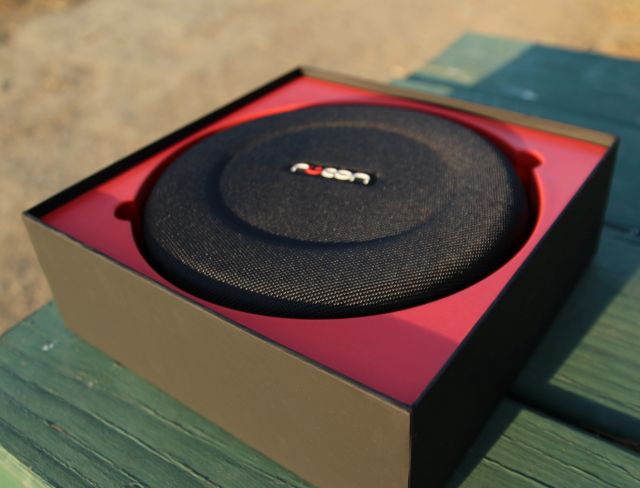
Fitness wearables don’t magically motivate users to workout more often (there’s a lot of skepticism on the health benefits of wearables). They do provide valuable fitness optimization for those who already exercise often. But keep in mind that $500 buys a lot of wearables. For example, for the price of a Recon Jet, users could get both the Polar V650 bicycle mount and a V800 multi-sport fitness tracker (our V650 and V800 review). While both don’t truly replicate the Jet’s HUD, they come close enough that users already invested in Polar’s hardware ecosystem might not want to switch. Even so, you still wouldn’t get a HUD — and that’s the key selling point of the Jet.
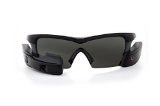 Recon Instruments Jet Smart Eyewear for Sports and Fitness, Black
The world's most powerful smart eyewear built for sports and fitness, Recon Jet delivers live metrics directly to your eye without breaking the flow of your activity.
Recon Instruments Jet Smart Eyewear for Sports and Fitness, Black
The world's most powerful smart eyewear built for sports and fitness, Recon Jet delivers live metrics directly to your eye without breaking the flow of your activity.There’s nothing quite like the Recon Jet’s display, other than Google Glass (our Google glass review). It’s for the ultra-competitive cyclists who have tried all the other fitness trackers and want to take their game to the next level. The only other wearable even remotely comparable, but without ruggedization and modularity, is the now discontinued Google Glass. While Google intends on releasing a Google Glass 2.0, rumors indicate it won’t arrive anytime soon. That said, those who cycle often might appreciate the Jet’s uniqueness, modular design, and polished software.
It’s the world’s only HUD for cycling, and it’s great, but only competitive cyclists need apply.Recon Jet Smart Fitness Eyewear




 Breaking Down the Inquisition - The Warrior
Breaking Down the Inquisition - The Warrior How to Change Your Windows 10 Store's Country Setting
How to Change Your Windows 10 Store's Country Setting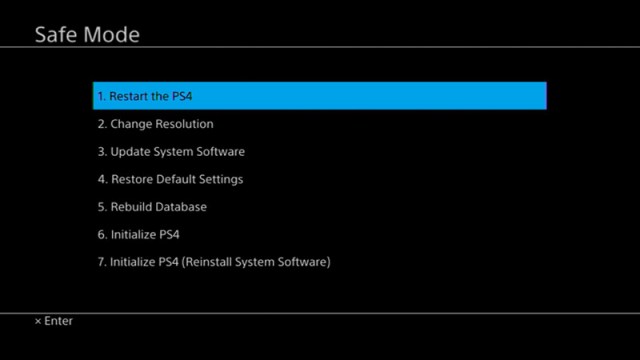 How to fix PS4 Safe Mode Boot Loop
How to fix PS4 Safe Mode Boot Loop Get The Hell Off My Lawn: Why Bioshock Has Ruined FPS Genre For Me
Get The Hell Off My Lawn: Why Bioshock Has Ruined FPS Genre For Me 3 Techy Things You Can Do Yourself and Save Money
3 Techy Things You Can Do Yourself and Save Money